Visible mending, as the name suggests, is mending clothing or textiles where the repair is intentionally left visible, rather than being hidden. It covers a range of techniques from simple patching to appliqué, darning and sashiko. As well as extending the life of your clothes, it becomes an intentional, decorative feature of the garment, making it unique and personal to the wearer and at the same time, makes a statement against fast fashion.
Here are some methods for you to try.
Visible Mending is a lifestyle choice that promotes sustainability, encourages creativity and nurtures mindfulness.
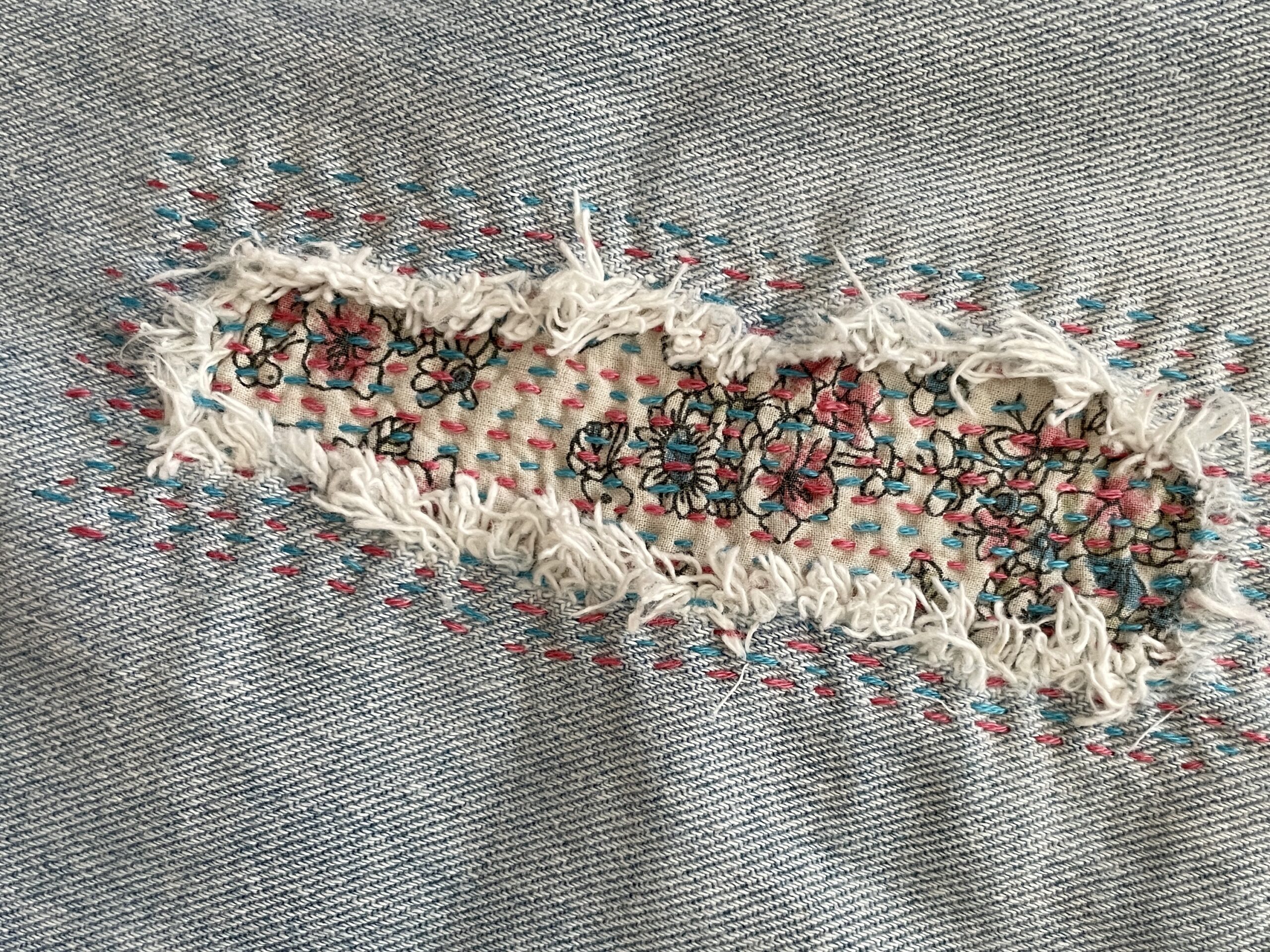
I always suggest using a patch which is the same type (e.g. stretch or woven) and weight of fabric as the garment you are repairing. Allow for a comfortable border around the hole. The patch can be applied on top, or from behind the hole. Sashiko stitches over it will add additional strength and interest.
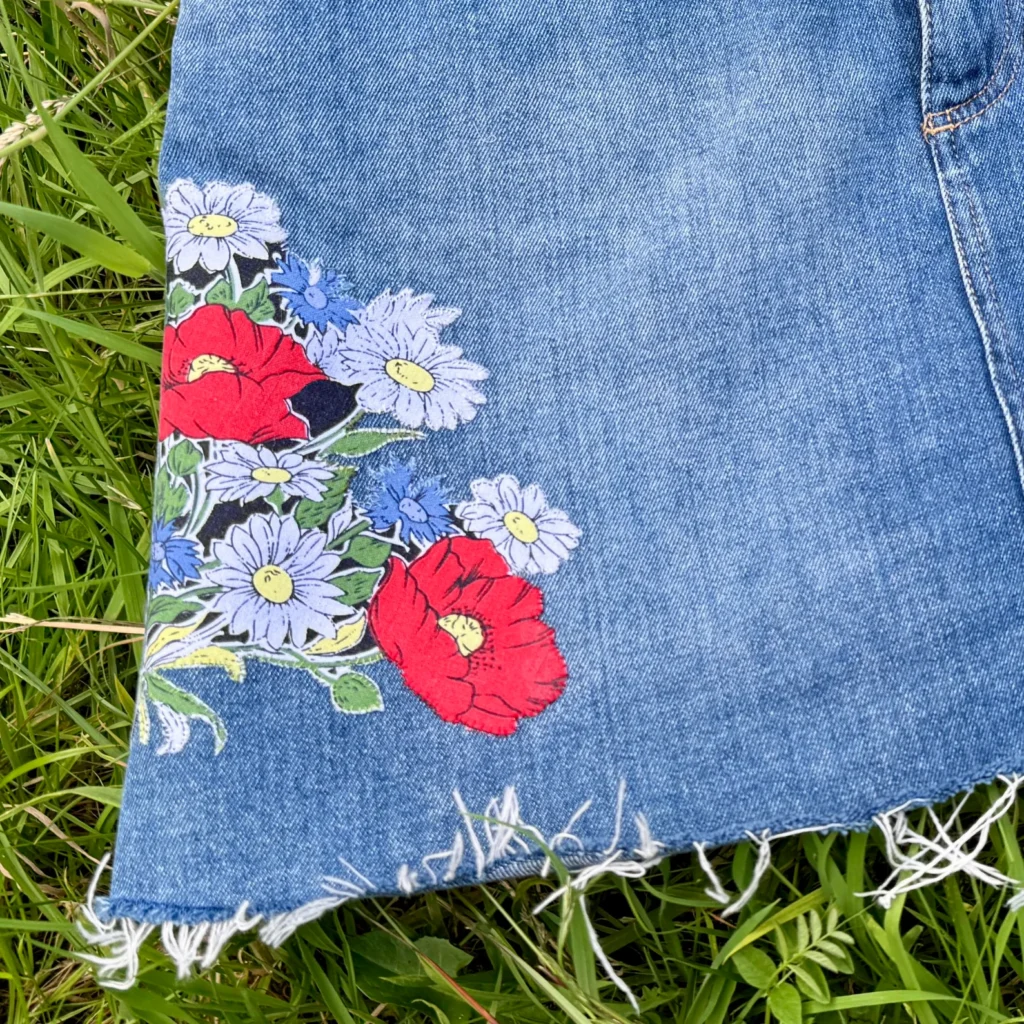
Appliqué essentially means applying one piece of fabric to another. A stain or small tear can be hidden with this method and the garment given a new lease of life.
I used fusible web (an iron-on adhesive) to attach the cut out flowers to the denim skirt (opposite) and then hand stitched them in place. Alternatively you could machine appliqué.
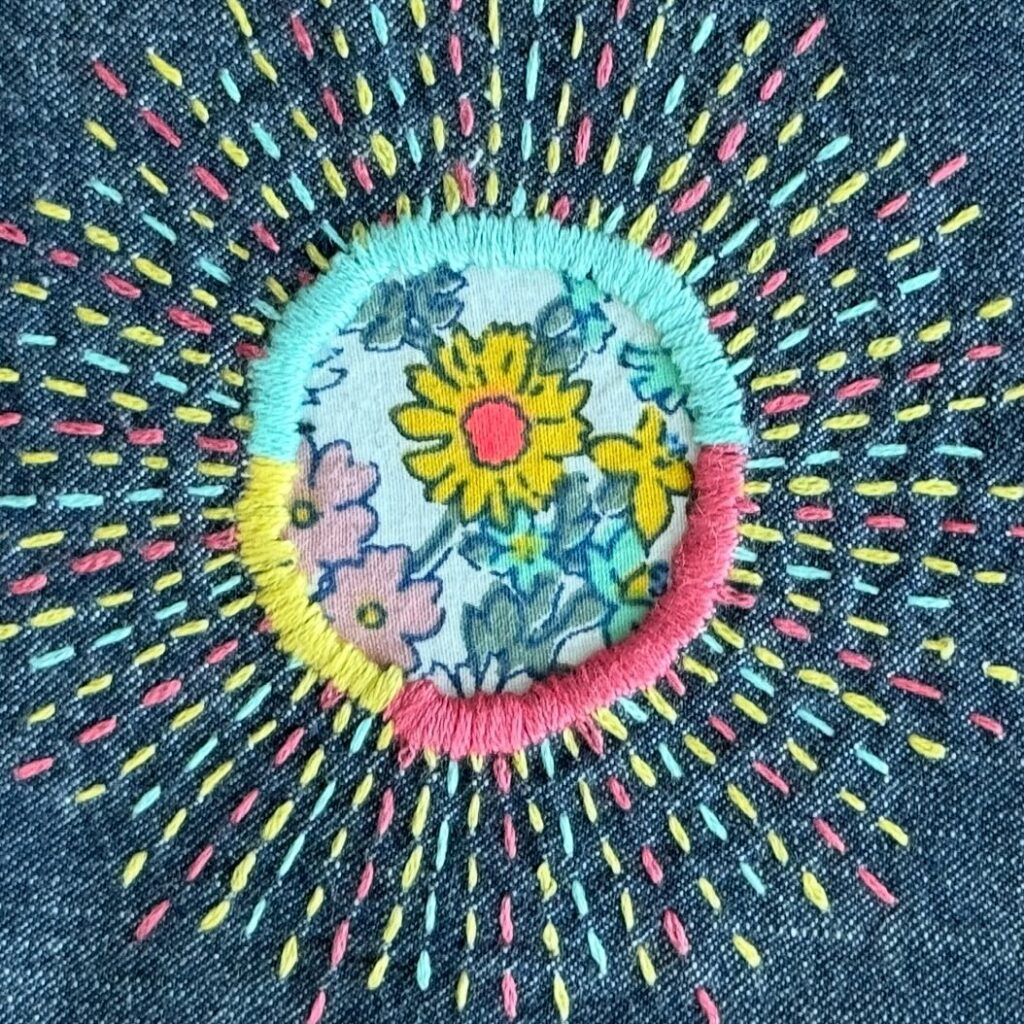
Reverse appliqué is a fabric manipulation method where a shape is cut out of the top layer of fabric to reveal a contrasting fabric beneath. The raw edge of the shape is then stitched either by hand or machine. On the denim (opposite) I have added some simple running stitches around the circle to give a ‘starburst’ effect.
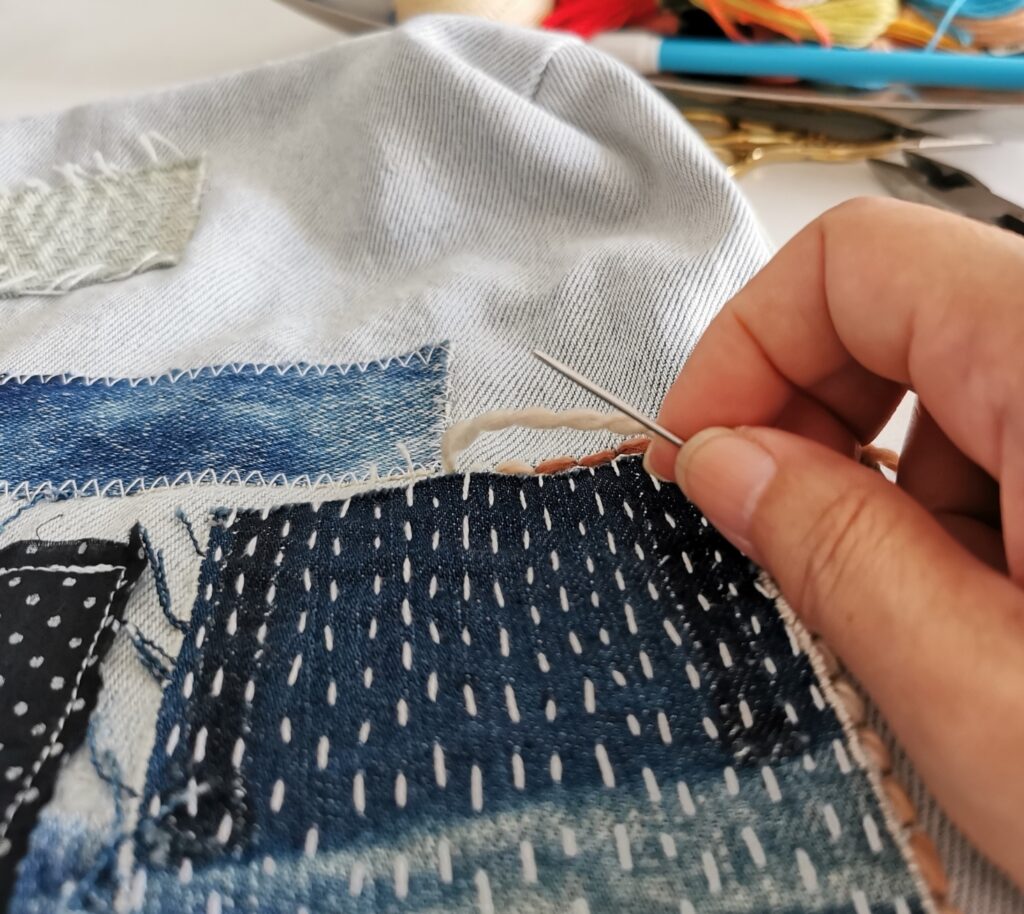
Boro is derived from the Japanese term ‘Boroboro’ which translates as something tattered or repaired. The process involves patching a worn garment with scraps of fabric and reinforcing the mend with tiny running stitches.
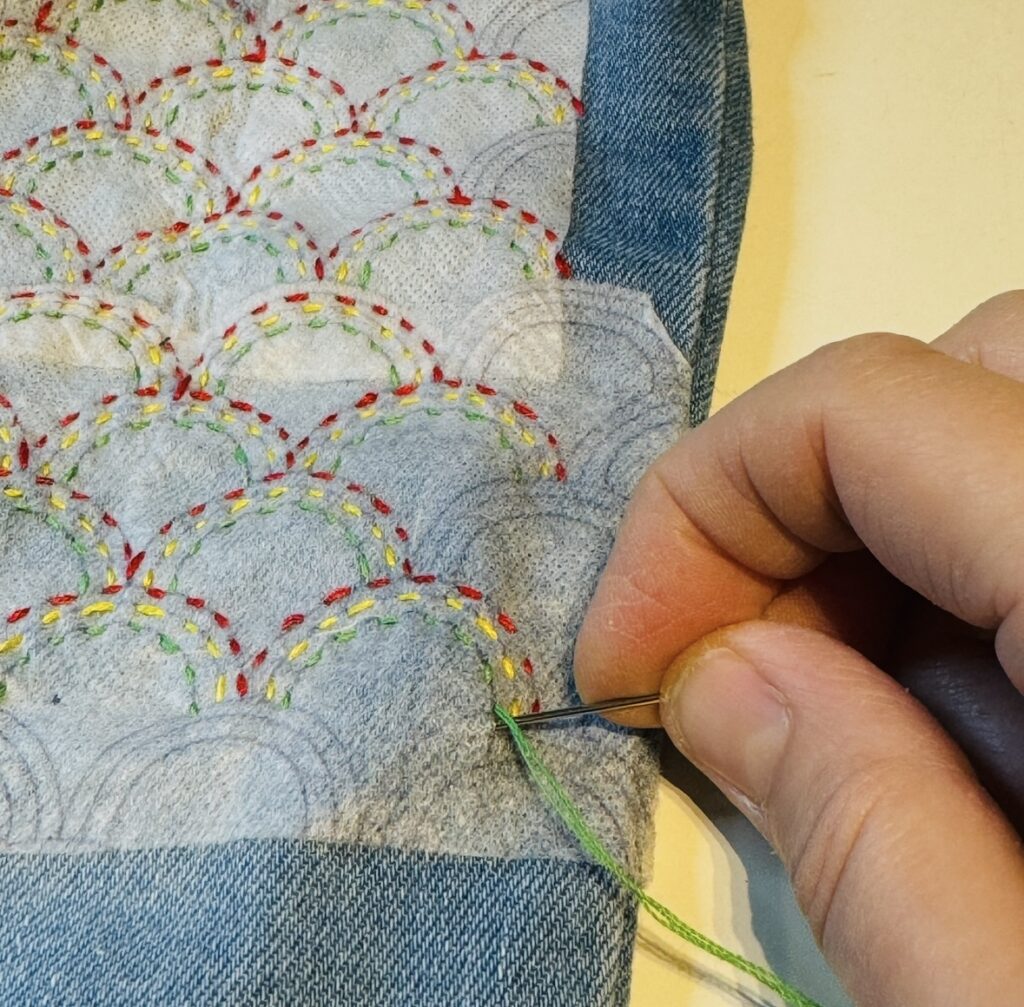
Originating in Japan, Sashiko is an embroidery technique that uses running stitches to create geometric patterns to reinforce and mend fabric.
You can transfer a design onto fabric by tracing and using stencils but I prefer to use ‘water soluble stabiliser,’ a material which has a cloth-like texture with adhesive on the back. You drawn or print your pattern onto it, peel away the backing sheet and stick on to your fabric, then stitch following the guidelines. When you are finished, simply wash it in warm water and the pattern dissolves, leaving just your stitches.
Packs of water soluble patterns are available in my shop
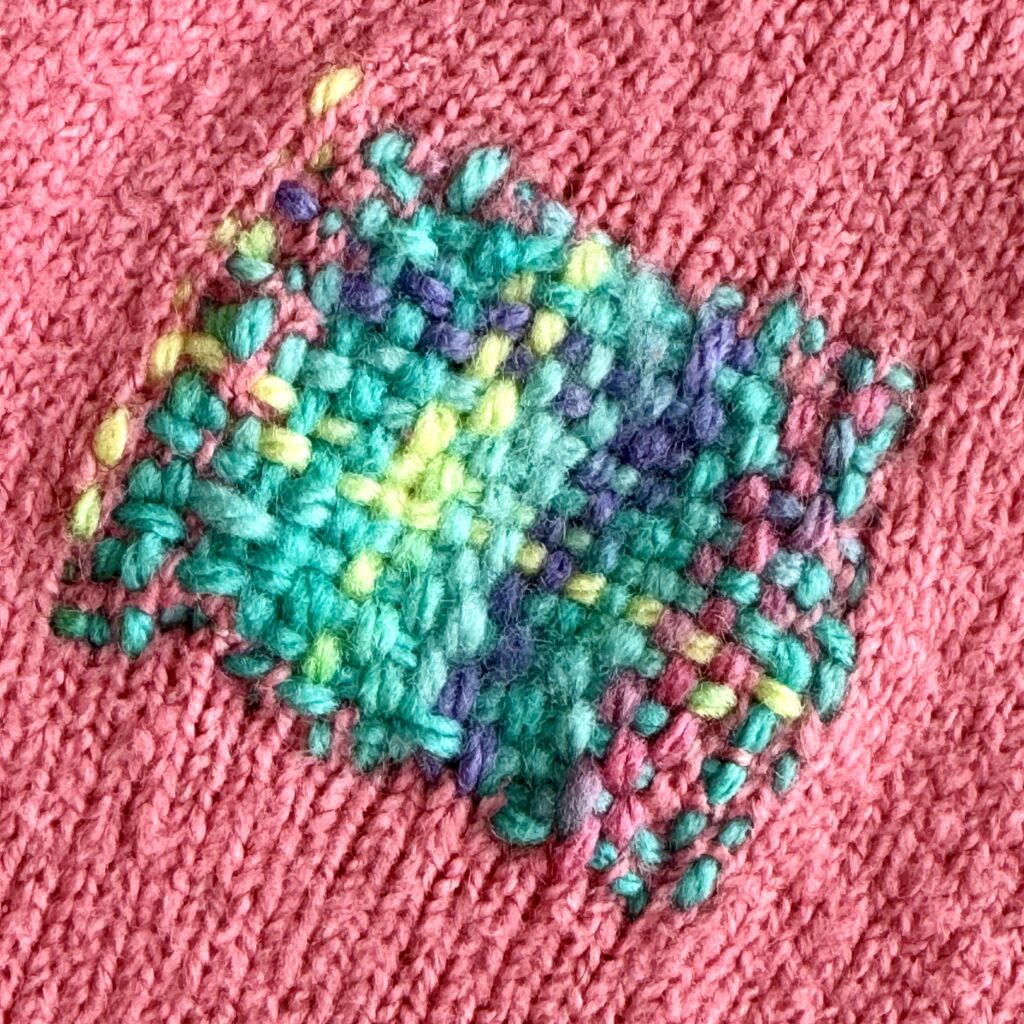
This technique is traditionally used for mending holes and areas that are threadbare in knitwear, but can also be used on woven fabrics like denim.
Using a yarn or thread similar to the garment, you sew small stitches back and forth over the damaged area, spanning the hole when you reach it. These are the ‘warp threads’ (vertical) and act as the skeleton of your weave, holding the tension while you are weaving.
For the ‘weft’ (horizontal threads), you make running stitches back and forth horizontally across the darning area, but this time, when you reach the hole, you take your needle under and over the warp threads alternatively in a weaving action.
A darning disc, egg or mushroom can be used under the hole to secure the fabric and create the correct tension, preventing it from bunching up, thereby making it easier to weave across the hole.
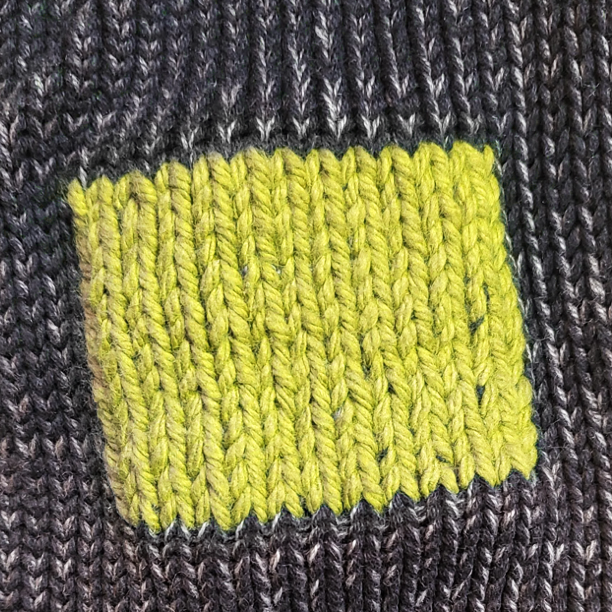
Swiss Darning, or Duplicate Stitch, mimics the knitted stitch. This is a little bit more advanced than needle weaving, but is a great way of creating a near-invisible mend in a knitted fabric. It’s better to do this when the garment has worn thin, rather than made a hole, as the stitches are much easier to follow.
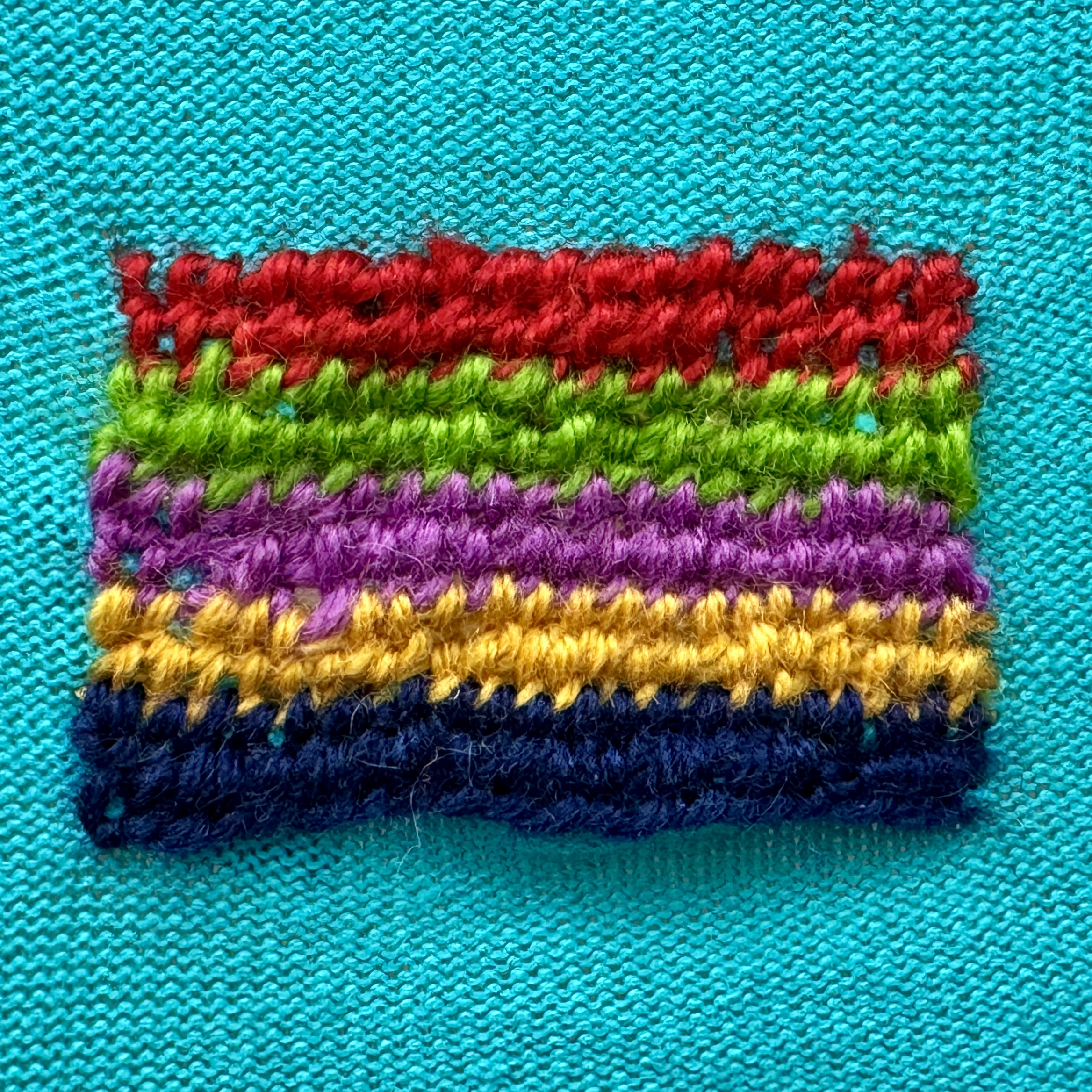
Scotch Darning uses rows of blanket stitch to cover the area of damage. It is a simple way to repair holes especially on the heels of socks and elbows of sweaters as it creates a hardwearing mend.

Honeycomb Darning is blanket stitch in a spiral. It is a good method to use to reinforce a threadbare area, especially on socks.
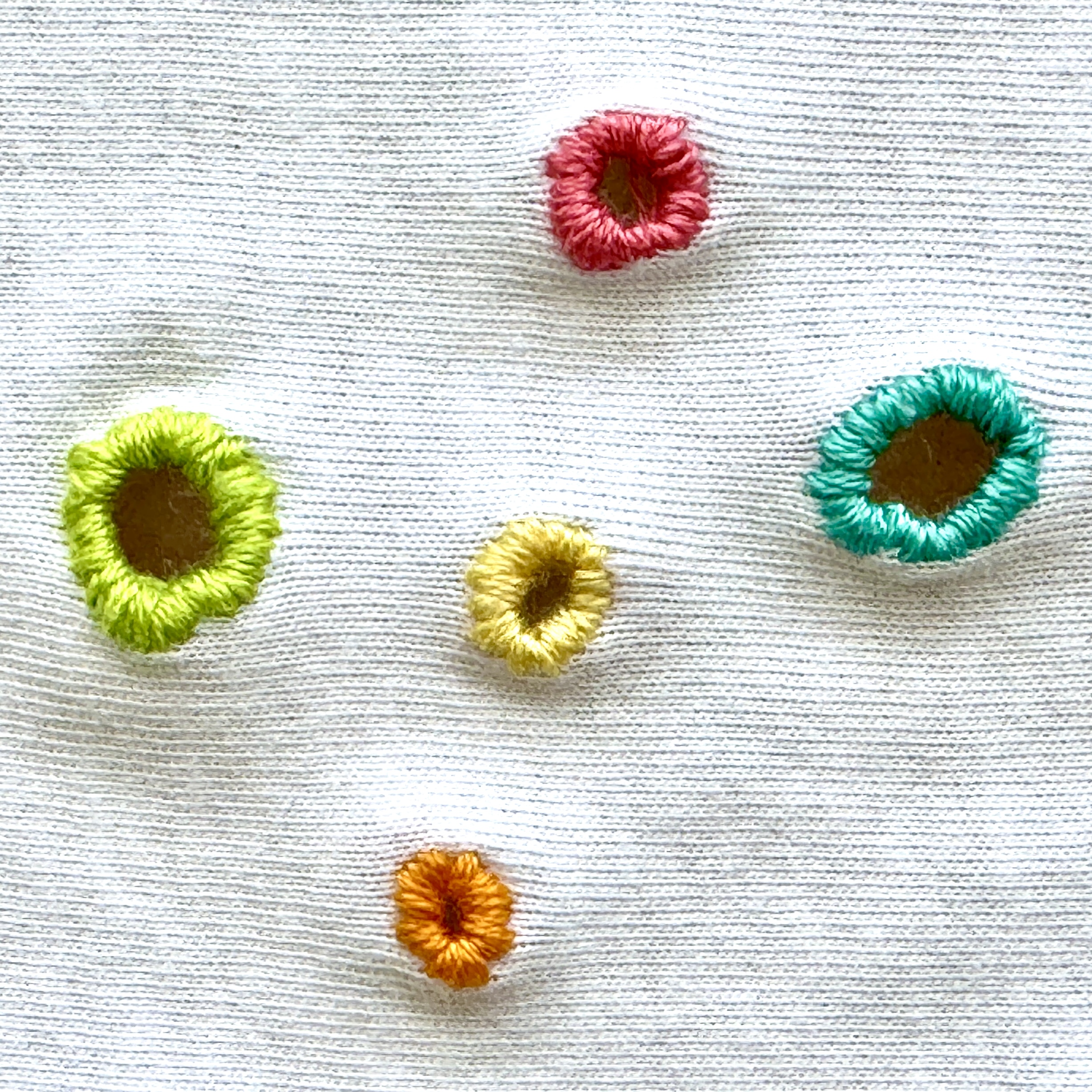
Eyelet Stitch is perfect for small moth holes in jumpers or T shirts. You simply stitch closely around the the holes, making it a feature of the garment.
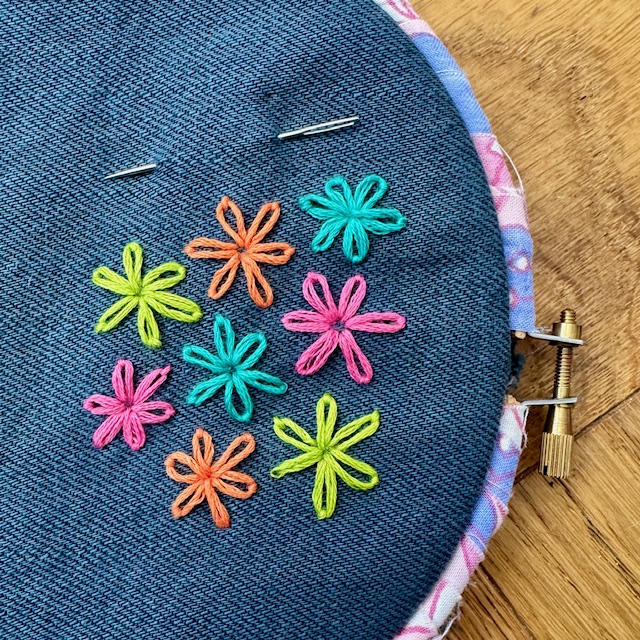
Embroidery can add decorative designs to your garment to cover a stain, hole or rip.
You will need an embroidery hoop to keep the fabric tight. You could keep it simple like this cluster of ‘lazy daisies’ shown here, use a transfer or draw freehand with a washable fabric marker.
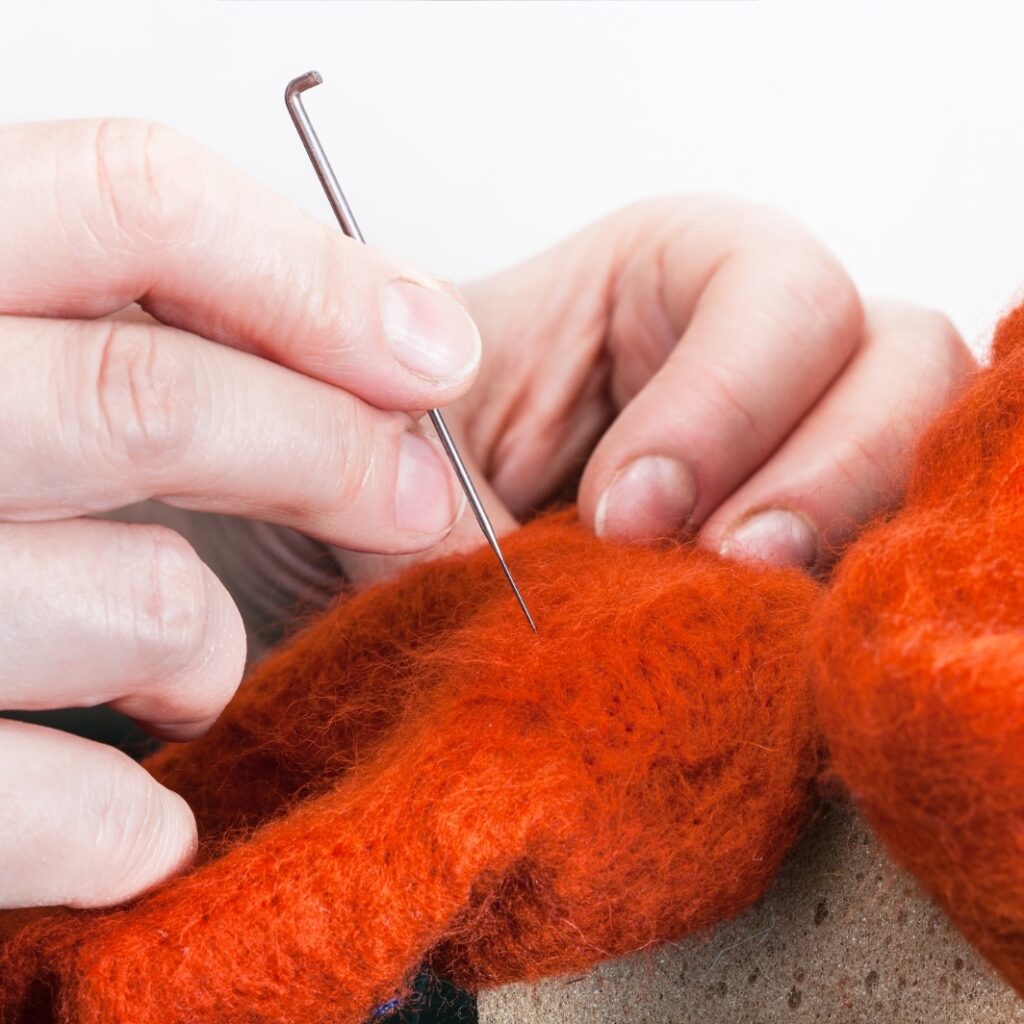
Using a foam block under the damaged area, simply stab felting wool over the hole using a felting needle. You can match your clothes in a similar colour or use a contrasting colour and make it a feature.